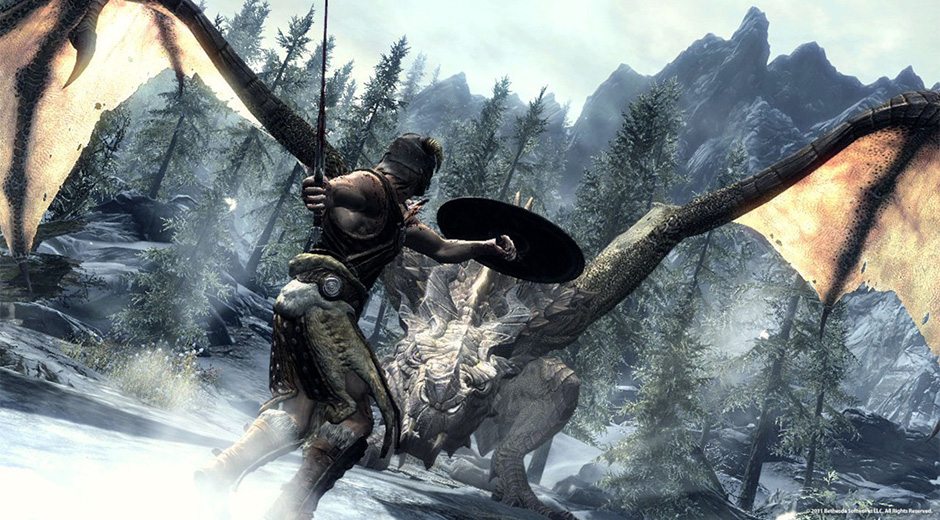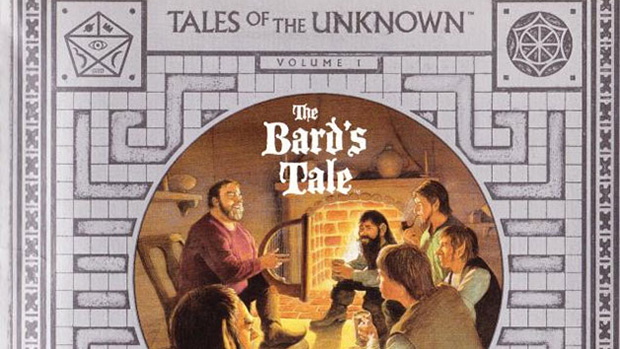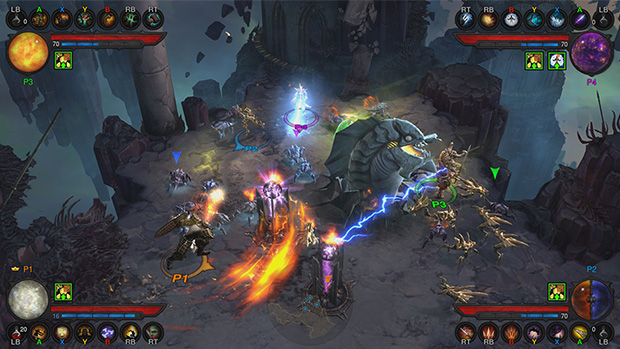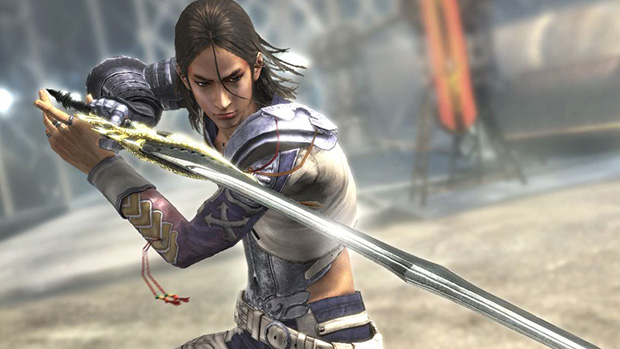
Know Your Genres: Role-Playing Games 101
Just what do we really mean when we talk about “game genres,” anyway? Sure, you’ve probably seen that “fans of the genre will enjoy this” phrase in umpteen game reviews, but the truth is that the most durable game genres have walked some long, ever-evolving, and very interesting roads over the past several decades. In this weekly series, Xbox Wire’s editorial team will break down exactly what shaped your favorite genres, why they’re so timelessly awesome, and where they’re headed – while providing you with some expert advice on the past and modern classics that you should check out!
This week, we’re going to briefly delve into the history of role-playing games, and break down the various and sundry sub-genres that RPGs tend to get categorized into. It’s quite a varied genre, so we’re planning to devote full features to various kinds of RPGs in the coming weeks and months. But for now, you can think of this entry as your introduction to the much, much larger topic of console and PC role-playing games.
The Past
It hopefully shouldn’t surprise too many of you to learn that console and PC role-playing games have their roots in old-school pen-and-paper games – specifically, tabletop war games and dice-based RPGs. Industry luminary Gary Gygax co-authored a tactical medieval miniatures game called Chainmail in 1971, and evolved many of its concepts into Dungeons & Dragons three years later.
Once PCs became a thing, it didn’t take terribly long for the genre’s earliest pioneers to take the concepts introduced by Dungeons & Dragons – that is, guiding a custom-made character through a fantasy realm, fighting monsters and improving with experience – and apply them to video games. Will Crowther’s Colossal Cave Adventure was the first widely-played game of its type back in 1975, and Roy Trubshaw’s 1978 multiplayer game MUD (or Multi-User Dungeon) would kick off an epidemic of text-based role-playing games.
Everything blew up really big when Richard Garriott published Ultima I in 1981 (along with its lesser-known predecessor Akalabeth in 1979), and that paved the way for now-classic series like New World Computing’s Might and Magic (1986), SSI’s Gold Box games (beginning with 1988’s Pool of Radiance), and hardcore first-person dungeon-crawlers like Wizardry (1981) and The Bard’s Tale (1985).

Japan’s nascent video game industry noticed all the hubbub, too, and decided to get in on the action. Enix’s Dragon Quest set off a national sensation in 1986, prompting the sort of retail madness that would eventually result in informal national holidays to coincide with the release of a new installment. Squaresoft quickly followed with Final Fantasy in 1987, and we all know just how silly that choice of title looks today.
While Japan spent the next few decades differentiating its RPGs with heavy narrative styles and well-defined characters, the 1990s saw explosive growth with regard to the Western RPG’s typically free-form character creation and narrative sandbox approach. Bethesda’s 1994 open-world game The Elder Scrolls: Arena (and its beloved 1996 follow-up The Elder Scrolls II: Daggerfall) pretty much cemented the divide between these East/West development approaches, and BioWare’s 1998 magnum opus Baldur’s Gate introduced the world to the Infinity Engine, which would later power Black Isle Studios’ Planescape: Torment and Icewind Dale as well. Then along came Blizzard North, with 1996’s Diablo – pretty much single-handedly inventing the action-RPG genre as we know it today.
And of course, Origin’s Ultima Online and Sony Online Entertainment’s EverQuest made unparalleled technological advancements that would inform game design to this very day, bringing the first massively multiplayer online role-playing games (MMORPGs) to market in 1997 and 1999, respectively. The sub-genre lit a huge fire under the collective rear ends of game developers around the world, resulting in a decade-plus of MMORPG projects vying for a piece of that massively multiplayer pie.
Blizzard Entertainment’s World of Warcraft would be the one to beat when it launched in 2004. With over 12 million subscribers at its peak, World of Warcraft was – and still is, if we’re being honest – the end-all, be-all MMORPG measuring stick. It (and games like it) have informed everything from Dark Souls to Destiny in subtle and obvious ways, and everyone’s still talking about it today.
The Present
Today, many of the series we’ve name-checked are still going strong, from Final Fantasy to The Elder Scrolls. Developers like Gearbox Software are blending the RPG with other genres in titles like Borderlands, while companies like Blizzard continue to refine proven methods with games such as Diablo III: Reaper of Souls. Some developers have taken RPGs deep into the realm of the ruthlessly hardcore, notably From Software’s Dark Souls series and Deck13 Interactive’s Lords of the Fallen. MMORPG-influenced game elements are everywhere, from Elite: Dangerous to Call of Duty. Lengthy old-school RPGs are still alive and well with titles like Divinity: Original Sin and the upcoming Baldur’s Gate: Siege of Dragonspear.

Basically, all of those ideas that were sparked back in the 1970s and beyond are still going strong today. If you’re inclined toward a particular style of role-playing game, pick your poison – there’s no shortage in sight.
The Future
Let’s not get too far ahead of ourselves here! Like we said up top, you can look forward to a full series breaking down each of these genres. We’ll have features that focus on Western RPGs such as The Elder Scrolls and Baldur’s Gate, one that tackles Japanese RPGs (or “JRPGs”) from Dragon Quest to Dark Souls, a treatise on action-RPGs such as Diablo and Path of Exile, and a rundown on all those titanic MMORPGs, from the early Ultima Online days to the current offerings of games like World of Warcraft and Destiny.
But for now, we hope you’ve enjoyed this cursory overview of what is perhaps the biggest and most widespread video game genre of them all!
Know Your Sub-genres: An RPG Primer
Confused as to what’s what? Here’s a handy lexicon!
Western RPG: Typically developed by U.S. or European developers, this style of RPG tends to cleave pretty close to the basic design elements of tabletop games such as Dungeons & Dragons. Typically, characters are only custom-created, and fully defined by the player, with no set narrative background in place (though obviously that’s not always the case, with Mass Effect as a prime example). Your mission is typically of the world-saving variety, but you’re also presented with a heck of a sandbox to play with. A prime example is The Elder Scrolls V: Skyrim – plenty of players never even finish the game, instead wandering off to get blissfully sidetracked by extracurricular fun for months on end!
Japanese RPG (“JRPG”): In contrast to the typical Western RPG, JRPGs tend to provide much more guided experiences. You usually play a textured and predefined character (or group of characters) in these games, with specific missions and highly structured side-quests along the way. Xbox 360 titles like Blue Dragon and Lost Odyssey are perfect examples of JRPGs.

Action-RPG (“ARPG”): Tense, twitch-focused, real-time adventures that typically pit you against hordes of monsters that pop like loot-filled pinatas – providing you with a constant flow of gold and equipment. They also tend to include lots of procedurally generated environments and content, making them eminently replayable. Blizzard’s Diablo series is widely regarded as the golden standard for the action-RPG genre.
Massively Multiplayer Online RPG (“MMORPG”): Large-scale virtual worlds, supporting thousands of players online, in the same space. Gameplay tends to be loaded with NPC-driven quests and group-friendly dungeon content, and most MMORPGs include some type of structured player-versus-player arena as well. World of Warcraft is still the dominant entry in this genre, though more recent games such as Destiny have pushed the boundaries of what an MMORPG can do.
